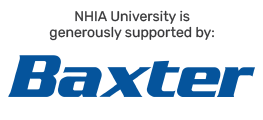
Amikacin Safety and Efficacy in Multi-Drug Resistant Tuberculosis
-
Register
- Prices available after logging in
Multi-drug resistant tuberculosis (MDR-TB) has become a leading world health crisis. MDR-TB is defined as resistance to the potent cornerstone TB drugs, isoniazid and rifampin. Approximately, 3% of newly infected cases and 20% of pre-existing TB cases are diagnosed with MDR-TB.
In recent years, aminoglycosides have become a part of the backbone of MDR-TB treatments. The most common aminoglycosides used for pulmonary TB are amikacin and streptomycin. Despite the lack of data on specific amikacin dosing and duration of treatment, it is still widely used as an add-on therapy in non-responsive MDR-TB patients. This article will review amikacin dosing and its use based on current guidelines; explore amikacin pharmacokentics and pharmacodynamics and dosing; explore the relationship between aminoglycosides and ototoxicity; and distinguish between monitoring methods in the home infusion setting.
LEARNING OBJECTIVES:
- Provide an overview of tuberculosis, multi-drug resistant tuberculosis (MDR-TB), and history of amikacin use.
- Understand aminoglycoside dosing and its use based on current guidelines.
- Comprehend amikacin pharmacokinetics and pharmacodynamics.
- Appreciate the relationship between aminoglocosides and ototoxicity.
- Distinguish between monitoring methods in the home infusion setting.

Vy Karp (Dang)
PharmD
Optum Infusion Services
Vy Karp (Dang), Pharm.D, HDDP is an Infusion Clinical Pharmacist at Optum Infusion Services in Wallingfor, Connecticut. She earned a Bachelor’s degree in Health Sciences at University of California, Irvine and a Doctor of Pharmacy degree at Roseman University of Health Sciences College of Pharmacy. Karp was a pharmacy practice resident in Las Vegas. She has practiced in infectious disease, genetics, oncology, and emergency medicine. Her current practice focuses on parenteral nutrition, acute care, inotropes, IV anti-infective agents, and pain management. She also provides clinical care for high-cost IV drugs including immunoglobulins (IGs), enzyme replacement therapies (eg. Fabrazyme), Radicava, Solaris, Entyvio, biologics, and alpha-1 proteinase inhibitors (eg. Glassia, Zemaira). Dang is currently licensed in Arizona, Connecticut, Massachusetts, Nevada and Ohio.
NHIA Requires planners, faculty, and others who affect the content of this activity to disclose all financial relationships they have with ineligible companies. All relevant financial relationships are thoroughly vetted and mitigated according to policy.
Vy Karp (Dang) has no relevant financial relationships with ineligible companies to disclose.
